RESTORATION, PRESERVATION & ARCHIVING
MENU
DIGITAL ARCHIVING AND RESTORATION OF AN OLD PHOTOGRAPH
19th century saw a great rise in popularity of gentlemen's club that took over the role of coffee houses as places where men could meet, share news, and debate ideas that were much too serious for rambunctious settings of alehouses. By the later part of the century, gentleman's club setting would often occupy an entire building with the interior consisting of a formal dining room, a library, and parlors for reading, gaming, and socializing. Many clubs also began to offer fitness amenities such as gymnasiums and courts for racquet sports.
 Not to be outdone by gentlemen on the other side of the Atlantic, the ever so competitive New Yorkers established a number of gentlemen's clubs characterized by their members' interest in heritage, politics, arts, and sports.
Not to be outdone by gentlemen on the other side of the Atlantic, the ever so competitive New Yorkers established a number of gentlemen's clubs characterized by their members' interest in heritage, politics, arts, and sports.
One of the first of the sports clubs, The Racquet Court Club opened in New York in 1876 and offered to its member two racquets courts, an indoor running track and two bowling alleys. But it was not until 1890, after merging with Racquet and Tennis Club the members of the club were able to engage in a game of real tennis on two of the clubs courts.
 The current building occupied by the Racquet and Tennis Club was designed in 1916. The building located at 370 Park Avenue, between East 52nd and 53rd Streets in Midtown Manhattan, New York City includes dining rooms, a billiard room, a library, a lounge, a gum, four squash courts, one doubles squash court, one racquets court, and the two tennis courts with natural light.
Surrounded by tall buildings and glass-clad skyscraper The Racquet Court Club presents an unusual sight for the midtown area of Manhattan. In 1979 was designated a NYC Landmark, and on July 21, 1983, the building was listed on the National Register of Historic Places.
The current building occupied by the Racquet and Tennis Club was designed in 1916. The building located at 370 Park Avenue, between East 52nd and 53rd Streets in Midtown Manhattan, New York City includes dining rooms, a billiard room, a library, a lounge, a gum, four squash courts, one doubles squash court, one racquets court, and the two tennis courts with natural light.
Surrounded by tall buildings and glass-clad skyscraper The Racquet Court Club presents an unusual sight for the midtown area of Manhattan. In 1979 was designated a NYC Landmark, and on July 21, 1983, the building was listed on the National Register of Historic Places.
The club continues to play an important part in New York City’s social and athletic life. Each year the members of The Racquet Court Club are active in Squash Doubles League and alternate between hosting the prestigious Kellner Cup and a Squash Doubles Association Pro Tour Challenger Event.
Over the years the club amassed an archive of documents and photographs illustrating the history and depicting the famous athletes who ones were members of the club. Many of those items have seen the better days and over the years became faded, torn, and stained. Digital archiving and restoration allows to reduce the impact of frequent handling, exposure to harmful light to the original photographs and documents, and to remove the signs of any damages that may have occurred over the years.
Sebastian Wintermute feels there are no substitutes for artists keen eye and attention to smallest details in restoration. Avoiding the use of “dust and scratch filters” that often remove small but exceptionally important details and contribute to an overall loss of image quality, Sebastian manually retouches every image, preventing loss of quality and clarity caused by use of shortcuts and reliance on automated image processing and editing.
Images intended for digital archives are subjected to extra scrutiny to assure that during restoration and retouching no details were lost, damages, or misinterpreted. Following examination and acceptance by a client, archival images are saved at a maximum allowed resolution in lossless digital formats. Special digital storage media, such as Gold Archival Grade DVDs designed to last for over 100 years when properly stored, are used to record and deliver the images to clients.

|

|

|

|

|

|

|

|

|
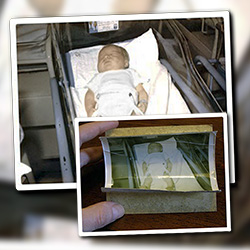
|
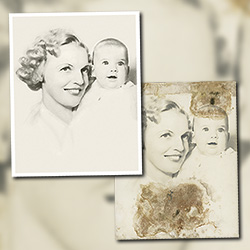
|
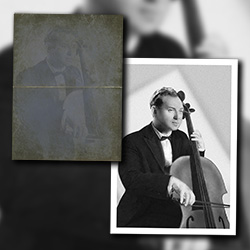
|

|

|

|

|

|

|

|

|

|

|

|
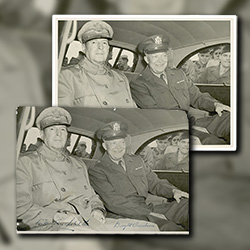
|
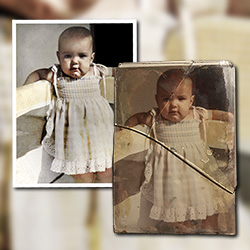
|
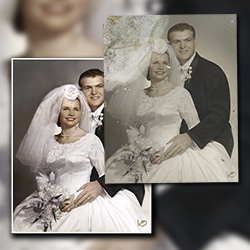
|

|

|

|

|

|
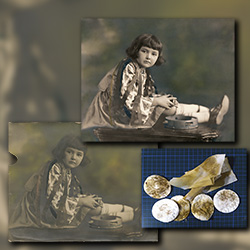
|

|

|

|

|
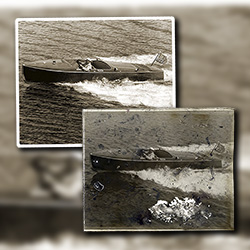
|

|

|

|
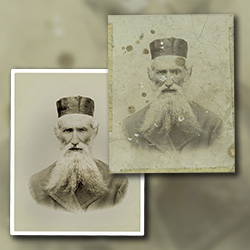
|

|

|

|

|
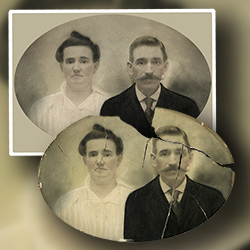
|
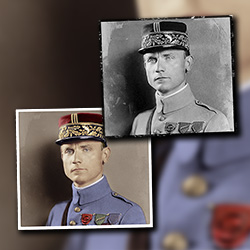
|

|

|

|

|

|

|

|

|

|

|

|

|

|